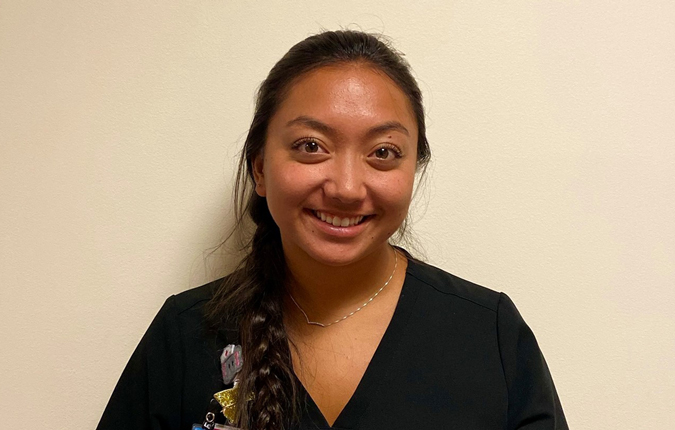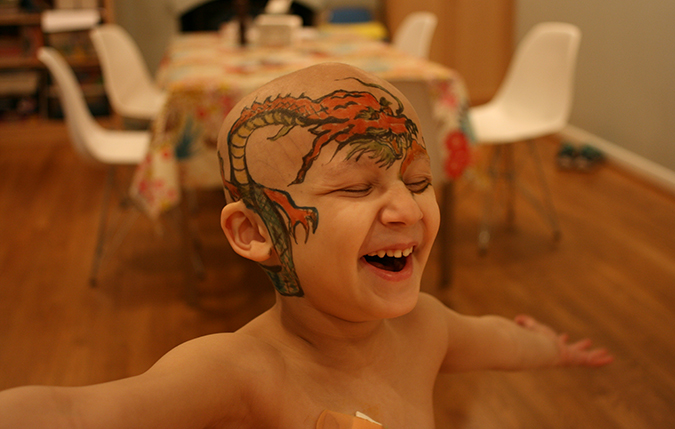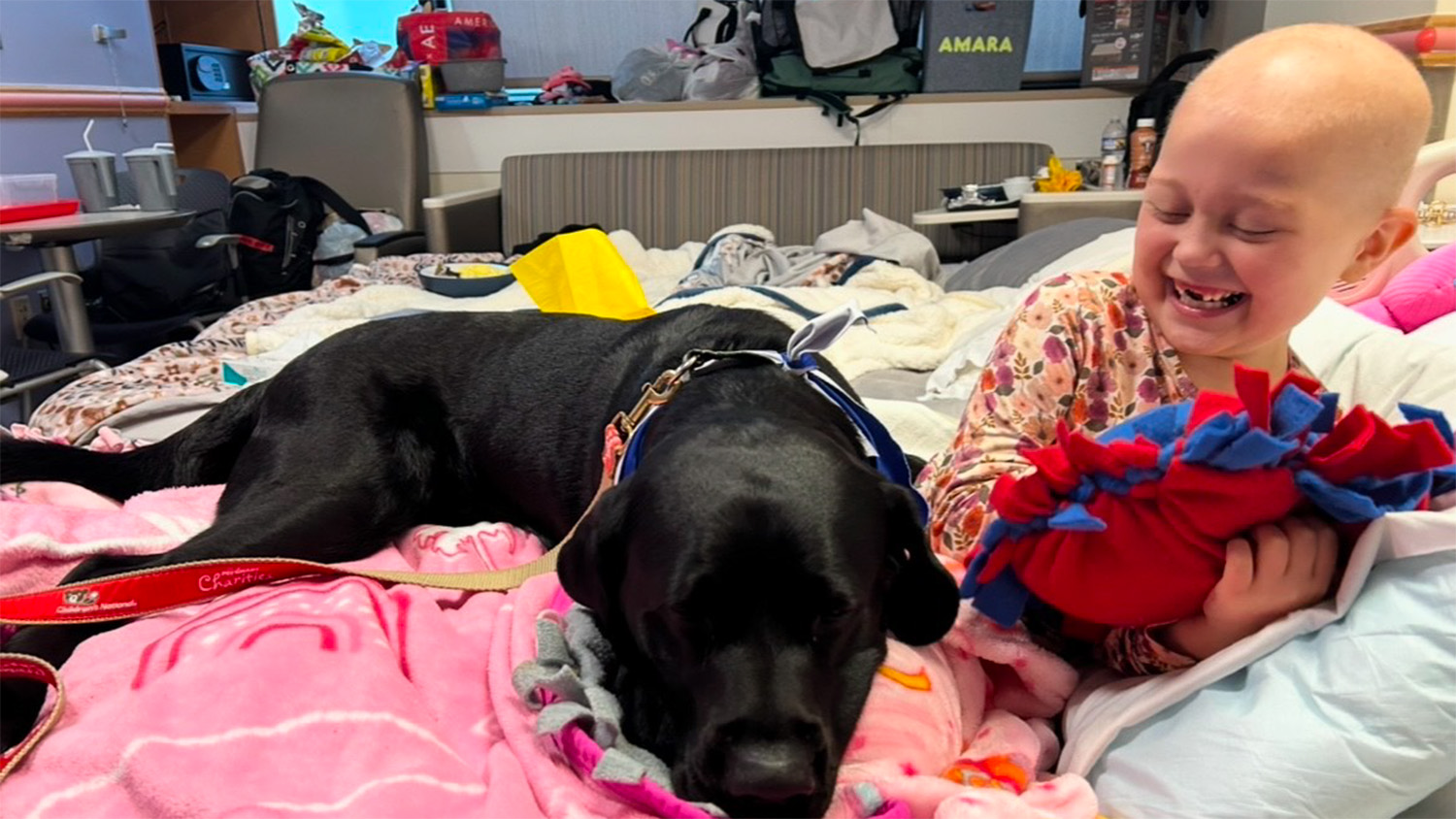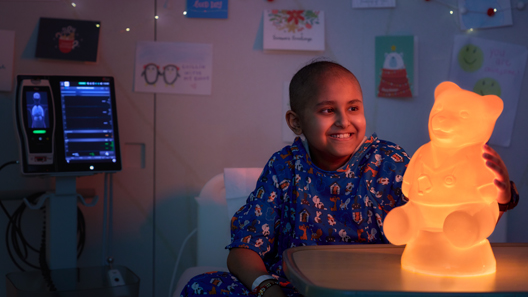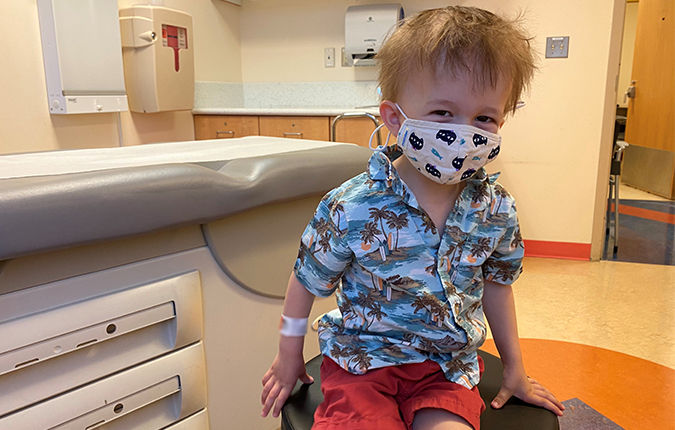Condition
Pediatric Leukemia
What You Need to Know
Leukemia is cancer of the blood. It's the most common kind of cancer in children.
Key Symptoms
Common symptoms of leukemia may include:
- Pale skin
- Feeling tired, weak or cold
- Dizziness
- Headaches
- Shortness of breath
- Frequent infections
Diagnosis
Doctors typically diagnose leukemia by:
- Bone marrow aspiration or biopsy
- Lab tests of blood and bone marrow samples
- X-ray
- Ultrasound
- Lymph node biopsy
- Lumbar puncture
Treatment
- Chemotherapy (chemo)
- Radiation therapy
- High-dose chemotherapy with a stem cell transplant
- Targeted therapy
- Immunotherapy
- Supportive care
- Clinical trials
Schedule an Appointment
Our pediatric specialists provide personalized care for your child’s physical, mental and emotional health needs. Meet our providers and schedule an appointment today.
Frequently Asked Questions
What is leukemia?
Leukemia is cancer that starts in young (immature) blood cells. It’s the most common kind of cancer in children.
The leukemia cells grow in bone marrow and then go out into the blood. The bone marrow is the soft, spongy center of certain bones. Healthy blood cells are made in the bone marrow. When a child has leukemia, the bone marrow makes abnormal blood cells that don’t mature and don't work the way they should. The abnormal cells are usually white blood cells (leukocytes). The abnormal cells reproduce very quickly. They build up in the bone marrow and crowd out healthy blood cells. This keeps the bone marrow from making enough healthy cells.
The types of blood cells include:
- Red blood cells (erythrocytes) or RBCs. Red blood cells carry oxygen from the lungs to the body and carry carbon dioxide back to the lungs. A low level of RBCs is called anemia. It can make your child feel tired, weak and short of breath.
- Platelets (thrombocytes). Platelets help with blood clotting and stop bleeding. A child with low levels of platelets will bruise and bleed easily.
- White blood cells (leukocytes) or WBCs. These cells fight infection and other disease. A child with low levels of white blood cells is more likely to have infections.
There are different types of leukemia in children. Most leukemias in children are acute. This means they tend to grow quickly. The most common types of leukemia in children are:
- Acute lymphocytic (or lymphoblastic) leukemia (ALL). This is the most common type of leukemia in children. About three out of four kids with leukemia have ALL.
- Acute myelogenous (or myeloid, myelocytic, non-lymphocytic) leukemia (AML). Most of the remaining cases of leukemia in children are AML.
Rare leukemias that are sometimes diagnosed in children include:
- Hybrid or mixed lineage leukemia. This is a mix of ALL and AML.
- Chronic myelogenous (or myeloid) leukemia (CML)
- Chronic lymphocytic leukemia (CLL)
- Juvenile myelomonocytic leukemia (JMML). This is very rare and is mostly found in very young children (toddlers).
What can I expect from leukemia care at Children's National Hospital?
The leukemia team at Children's National, which consists of doctors, nurses, researchers, social workers, a psychologist, an art therapist, a child life specialist, a nutritionist and a chaplain, work collaboratively to provide the best care for patients.
Children’s National leukemia patients have access to the most current therapies in treating pediatric cancer through the Leukemia and Lymphoma Program, a part of Children’s Oncology Group (COG), a clinical trial cooperative group supported by the National Cancer Institute. The dedicated team of physicians, nurses and scientists conduct clinical trials and perform research to identify cancer causes and pioneer treatments and cures.
Currently, nearly 200 leukemia and lymphoma patients are receiving treatment and participating in clinical studies at Children’s National.
In addition, the Patient and Family Support Program provides comprehensive mental health and psychosocial services and helpful resources for all patients treated in the Cancer and Blood Disorders Center, as well as patients’ parents and siblings.
What causes leukemia in children?
The exact cause of leukemia in children is not known. There are certain genetic and immune system conditions passed on from parents to children (inherited) that increase the risk for childhood leukemia. Examples are Down syndrome and Bloom syndrome. But most childhood leukemia is not inherited.
Who is at risk for childhood leukemia?
The risk factors for childhood leukemia include:
- Exposure to high levels of radiation
- Having certain inherited syndromes, such as Down syndrome and Li-Fraumeni syndrome
- Having an inherited condition that affects the immune system
What are the symptoms of leukemia in children?
Symptoms of leukemia depend on many factors. It might be in the bone marrow, blood or other tissues and organs. These may include the lymph nodes, liver, spleen, thymus, brain, spinal cord, gums and skin.
Symptoms can vary in each child, and can include:
- Pale skin
- Feeling tired, weak or cold
- Dizziness
- Headaches
- Shortness of breath, trouble breathing
- Frequent infections or infections that don't go away
- Fever
- Easy bruising or bleeding, many nosebleeds, or bleeding gums
- Bone or joint pain
- Small, flat, red spots under the skin
- Belly (abdominal) swelling
- Not eating
- Weight loss
- Swollen lymph glands (nodes) that may feel like firm bumps under the skin in the neck, armpits or groin
These symptoms can be caused by other, more common, health conditions. Make sure your child sees a healthcare provider for a diagnosis.
How is leukemia diagnosed in children?
Your child's healthcare provider will ask a lot of questions about your child's symptoms. A physical exam will be done. Blood tests and other tests may be needed. A complete blood count (CBC) shows the number of red blood cells, different types of white blood cells and platelets in your child's blood. If the results are abnormal, you may be referred to a pediatric cancer specialist (pediatric oncologist).
The oncologist may want to do more tests to look for leukemia. If it's found, tests will be needed to learn more about it. The tests used can include:
- Bone marrow aspiration or biopsy. Bone marrow is in the center of certain bones. It’s where blood cells are made. A small amount of bone marrow may be taken out for testing. This is called aspiration. A solid piece of bone marrow tissue may also be taken. This is called a biopsy. Bone marrow is often taken from the back of the hip bone. Medicines will be used to help your child sleep and not feel pain while this is done. This test can show if there are leukemia cells in the bone marrow.
- Lab tests of blood and bone marrow samples. Special tests will be done on your child's blood and bone marrow. They're used to find out what kind of leukemia it is and plan treatment. These tests include flow cytometry, cytogenetic analysis and immunohistochemistry. They look for things such as DNA and chromosome changes in the leukemia cells.
- X-ray. A chest X-ray might be done to look for infection, swollen lymph nodes or other changes inside your child's chest.
- Ultrasound (sonography). This test uses sound waves and a computer to create images of the inside of your child's body. It might be used to look for swollen organs in the belly, such as the spleen, kidneys and liver. It can also be used to look at lymph nodes.
- Lymph node biopsy. If swollen lymph nodes are found, a tiny piece (sample) of the lymph node is taken out to be tested for cancer cells.
- Lumbar puncture. This is done to look for leukemia cells in the brain and spinal cord. Medicine will be used to make your child sleep. Then a thin needle is put in between the bones of the lower back and into the spinal canal. This is the area around the spinal cord. It contains cerebral spinal fluid (CSF), the fluid that flows around and cushions the brain and spinal cord. A small amount of CSF is removed and sent for testing.
When leukemia is diagnosed, tests are done to find out the exact type of leukemia it is. Leukemia isn't given a stage number like most other cancers. Instead it's classified into groups, subtypes or both.
Classifying leukemia is very complex. But it's an important part of making treatment plans and predicting treatment outcomes. Be sure to ask your child's healthcare provider to explain the details of your child's leukemia in a way you can understand.
How is leukemia treated in children?
Before treatment starts, your child may need to be treated for low blood counts or infections. This can be done by using:
- Red blood cell transfusions to bring up low red blood cell levels
- Platelet transfusions to help stop bleeding
- Antibiotics to treat any infections
Leukemia treatment depends on details about the type of leukemia, your child's age and overall health, your preferences and other factors. Treatment tends to be started soon after diagnosis. You'll work with your child's treatment team to make the best plan. Sometimes more than one kind of treatment is used. Leukemia can be treated with any of these:
- Chemotherapy (chemo). This treatment uses strong medicines to kill cancer cells or stop them from growing. Chemo is most often put into the blood through a vein by an IV (intravenous) line. It can also be put right into the spinal fluid (CSF), injected into a muscle or taken by mouth. Chemo is the main treatment for most leukemias in children. Several medicines are often given at different times. It’s often done in cycles, with rest periods in between. This gives your child time to recover between treatments.
- Radiation therapy. This treatment uses high-energy X-rays or other types of radiation beams to kill cancer cells or stop them from growing. Radiation may be used in rare cases. But it's not used for most children with leukemia.
- High-dose chemotherapy with a stem cell transplant. Young blood cells (stem cells) are taken from the child or from someone else. This is followed by high doses of chemo. These doses kill the leukemia cells and the bone marrow. Then the stem cells are given to rebuild healthy bone marrow. Transplant may be needed if ALL comes back after treatment.
- Targeted therapy. These medicines work in different ways than chemo. They attack cancer cells that have certain changes in them. They might be used for certain subtypes of leukemia.
- Immunotherapy. This treatment helps the body's own immune system attack the cancer cells. It's mostly used in clinical trials at this time.
- Supportive care. Cancer treatment can cause side effects. Supportive care includes medicines and other treatments used to manage these side effects. It can include treatments for pain, fever, infection, nausea and vomiting. Supportive care is used to treat the problems caused by the leukemia, not the disease itself. It's a key part of good cancer care.
- Clinical trials. Ask your child's healthcare provider if there are any treatments being tested that may work well for your child. Most children with cancer are treated as part of a clinical trial. This way a child gets the best treatment available today, as well as treatment that's expected to be even better.
With any cancer, how well a child is expected to recover (their prognosis) varies. Keep in mind:
- Getting medical treatment right away is important for the best outcomes.
- Ongoing follow-up care during and after treatment is needed.
- New treatments are being tested to improve outcomes and to lessen side effects.
What are clinic visits like for leukemia at Children’s National?
Children’s National's leukemia team, which consists of doctors, nurses, researchers, social workers, a psychologist, an art therapist, a child life specialist, a nutritionist, and a chaplain, work collaboratively to provide the best care for patients during clinic visits.
Each patient is seen by a doctor or nurse practitioner. During each visit, staff will review:
- Any symptoms or side effects the patient has experienced.
- Exact doses of medicines taken.
- Medications needing refills.
- Next stage of chemotherapy, if the child is about to begin a new phase.
All medications should be brought to each visit.
The patient cannot receive scheduled chemotherapy until checked by a doctor or nurse, and in some cases, must have lab results before the process can begin.
What are possible complications of leukemia in a child?
A child may have complications from the leukemia or from treatment. These problems may be short-term or long-term.
Treatment can cause many side effects. Some may be minor. Some may be serious and even life-threatening. Your child may need medicines to help prevent or lessen side effects. You’ll also be given instructions on what you can do at home.
Possible complications of leukemia can include:
- Serious infections
- Severe bleeding (hemorrhage)
- Thickened blood from large numbers of leukemia cells
Possible long-term complications from the leukemia or the treatment can include:
- Return of the leukemia
- Growth of other cancers later in life
- Heart, lung and thyroid problems
- Learning problems
- Slowed growth and development
- Hearing problems
- Problems with the ability to have children in the future (infertility)
- Bone problems such as thinning of bones (osteoporosis)
- Cataracts
What can I do to prevent leukemia in my child?
Most childhood cancers, including leukemia, can’t be prevented.
How can I help my child live with leukemia?
A child with leukemia needs ongoing care. Your child will be seen by oncologists and other healthcare providers to treat any late effects of treatment and to watch for signs or symptoms of the cancer returning. Your child will be checked with imaging tests and other tests. And your child may see other healthcare providers for problems from the cancer or from treatment.
You can help your child manage cancer treatment in many ways. For instance:
- Your child may have trouble eating. A dietitian may be able to help.
- Your child may be very tired. They will need to balance rest and activity. Encourage your child to get some exercise. This is good for overall health. And it may help to lessen tiredness.
- Get emotional support for your child. Find a counselor or child support group for help.
- Make sure your child goes to all follow-up appointments.
When should I call my child’s healthcare provider?
Talk with your child's healthcare provider about problems you should watch for. Know how to get help after office hours and on weekends and holidays. Call right away for any of the following:
- Fever of 100.4°F (38°C) or higher, or as advised by your child's provider
- Symptoms or side effects that get worse or don't get better with treatment
- New symptoms
Meet the Providers Who Treat Leukemia
Patient Stories
Departments that Treat Leukemia

Oncology
The Oncology Program at Children's National is ranked one of the best cancer centers for children by U.S. News & World Report thanks to our high level of experience and expertise. Learn more about this program.

Experimental Therapeutics Program
With exclusive access to new treatments, the Experimental Therapeutics Program at Children's National offers renewed hope for a good outcome to all families.

Leukemia and Lymphoma Program
We deliver comprehensive care for all blood cancers including chemotherapy, bone marrow transplant and experimental therapeutics.
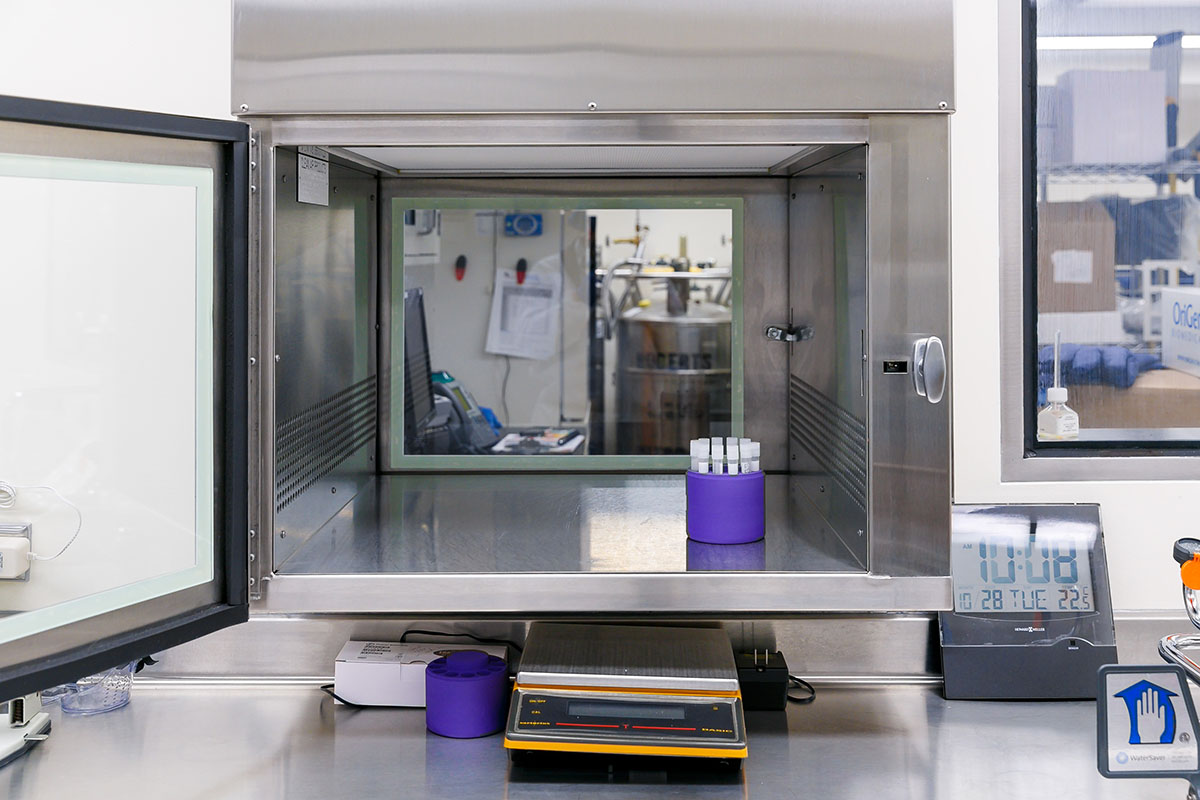
Cellular Therapy Program
The Cellular Therapy Program offers cutting-edge treatments to fight cancer and infections. See how we provide hope for children with treatment-resistant cancers.

Blood and Marrow Transplantation
Our program is one of the only dedicated pediatric bone marrow transplant programs in the region. We offer advanced treatments for children with leukemia and blood disorders like sickle cell disease. Learn more about this program.

Help Kids and Make a Difference
Invest in future cures for some of life's most devastating diseases. Give today to help more children grow up stronger.

